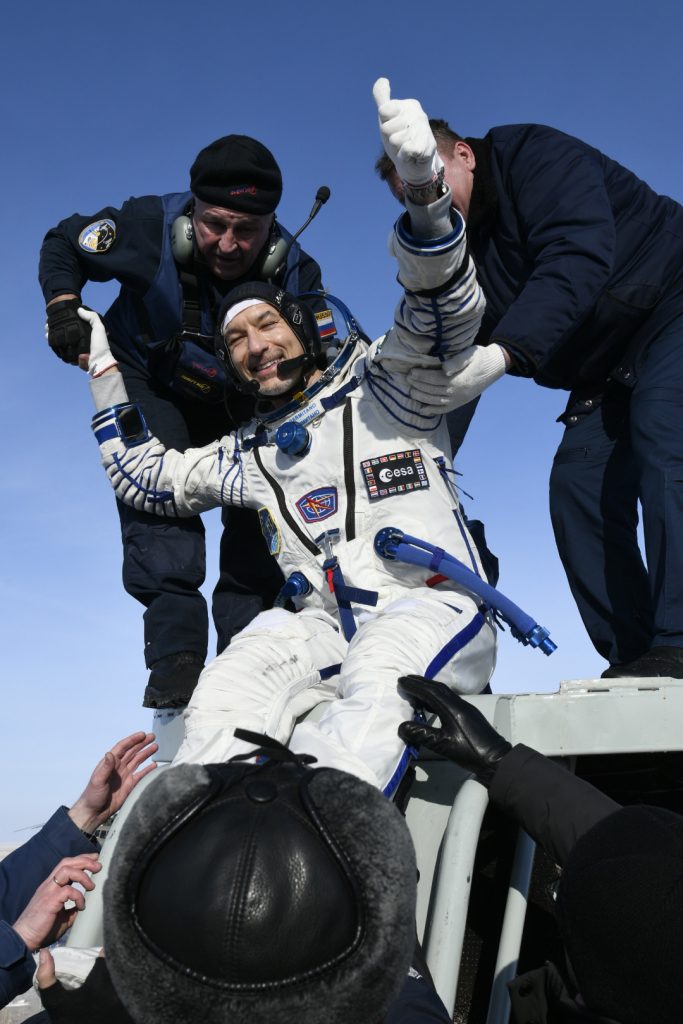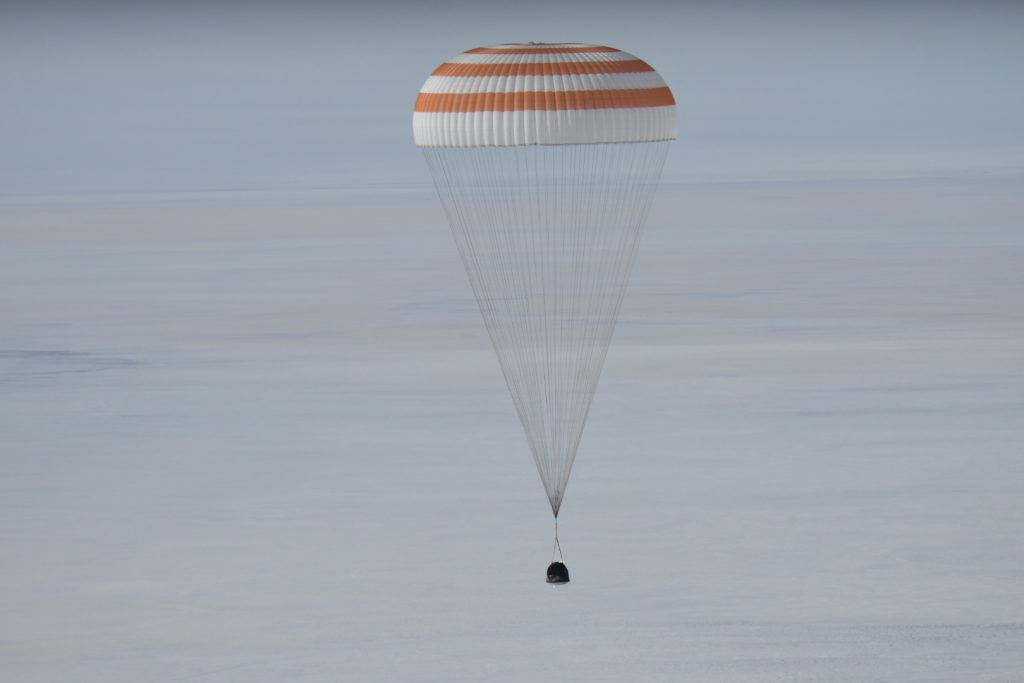ESA astronaut Luca Parmitano is back on Earth after touching down in the Russian Soyuz MS-13 crew module at 09:12 GMT (10:12 CET) Thursday 6 February.
Luca’s return to Earth marks the end of his second International Space Station mission known as ‚Beyond‘. He travelled back alongside NASA astronaut Christina Koch and Roscosmos Soyuz commander Alexander Skvortsov, and landed in the snowy steppes of Kazakhstan where he was met by expert teams from Roscosmos, ESA and NASA.
Luca was third to emerge from the module, with all three space travellers waving and smiling at those there to meet them.

Luca Parmitano emerges from Soyuz MS-13. ESA-M.Pedoussaut.
After a number of traditional ceremonies, he will fly directly to Cologne, Germany, where he will continue to be monitored by ESA’s space medicine team as he readapts to Earth’s gravity at ESA’s European Astronaut Centre (EAC) and DLR’s ‘:envihab’ facility.

Soyuz MS-13 returns to Earth. ESA-M.Pedoussaut
During his Beyond mission, Luca became the third European and first Italian in command of the International Space Station, performed four complex spacewalks to maintain the cosmic-ray-detecting Alpha Magnetic Spectrometer AMS-02, gained the European record for most cumulative hours spent spacewalking at 33 hours and 9 minutes, remotely operated a rover in the Netherlands as part of the Analog-1 experiment, delivered an important climate change message to leaders at the UN climate change conference in Madrid, and supported over 50 European experiments as well as 200 international experiments in space.
He also played the first ever DJ set in space and shared numerous images of our planet and his activities on the Station.
Back on Earth, Luca will continue working with European researchers on experiments including Acoustic Diagnostics that looks into the impact of the Space Station environment on astronaut hearing, the TIME experiment that looks at whether astronauts judge time differently in space, and two experiments known as Grip and GRASP that look into the physiology behind eye-hand coordination and the role of gravity in regulating grip force, among others.
The findings of research conducted as part of Luca’s Beyond mission will help shape the future of human and robotic exploration while enhancing technological developments on Earth.
Find out more about what it takes to return an astronaut to Earth in the latest episode of the Beyond mission podcast ESA Explores.



